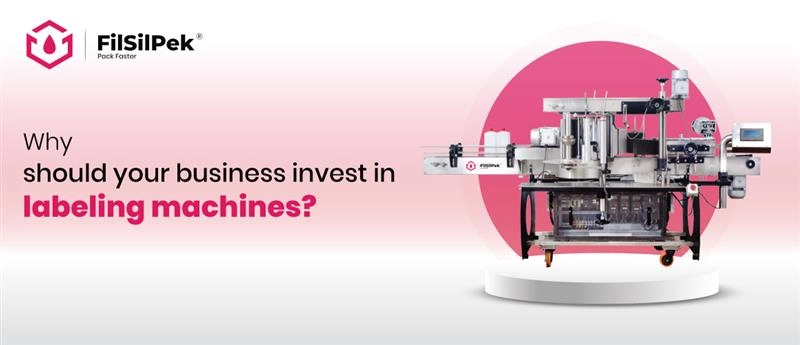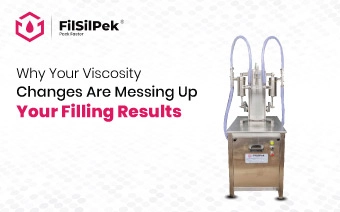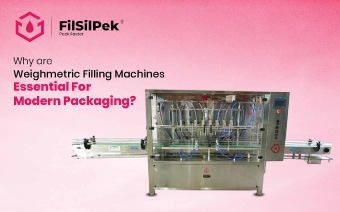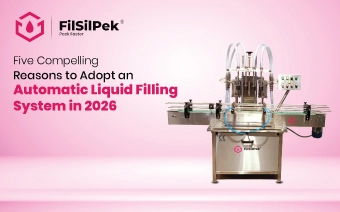Why should your business invest in labeling machines?
As industries become more competitive and regulations stricter, investing in a labeling machine is no longer just an option for scaling companies. It has become a necessity to maintain quality, improve accuracy, and meet market expectations without compromising on speed. This article explores why your business should invest in labeling machine, the benefits it brings, and how it adds long-term value.
What is a labeling machine and why is it important?
A labeling machines is an automated system that applies labels to products, containers, or packaging. These labels can carry essential details such as brand identity, product information, expiry dates, barcodes, QR codes, and regulatory data. Unlike manual methods, machines ensure consistent placement, accuracy, and speed, which are difficult to achieve otherwise.
The importance of a labeling machines lies in its ability to bring uniformity and reliability to the packaging process. In industries like food, pharmaceuticals, FMCG, and chemicals, even a small labeling error can result in regulatory penalties or damage to brand credibility. Automating this step ensures every product leaves the facility with a professional finish that builds trust while meeting compliance requirements.
Key reasons to invest in a labeling machine
Labeling machines bring value far beyond faster operations. They directly address challenges industries face such as compliance failures, inconsistent presentation, and production delays. For businesses in food, pharmaceuticals, FMCG, and chemicals, the stakes are high because incorrect or delayed labeling can mean rejected consignments, regulatory fines, or dissatisfied customers. Below are the most important technical reasons to consider a labeling machine as a core part of your packaging line.
1. Reliable application on complex packaging
Products come in all shapes and sizes, and manual labeling often fails when it comes to curved bottles, small vials, or uneven surfaces. This leads to misaligned labels, overlapping stickers, and an unprofessional finish. Labeling machines are designed with advanced rollers, applicators, and sensors that can handle these complexities with consistent outcomes, no matter how challenging the packaging design is.
- Handles round, oval, and irregular shapes without misplacement.
- Capable of micro-labeling on ampoules, syringes, and cosmetic tubes.
- Edge detection sensors ensure labels don’t shift out of alignment.
- Repeat accuracy across thousands of products in a single batch.
2. Integration with coding and marking systems
For many industries, labeling is not just about branding but also about product identification, expiry dates, and regulatory data. When done manually, this coordination often causes mismatches between labels and printed information. Labeling machines integrate directly with coding and marking systems, allowing real-time printing alongside label application, ensuring accuracy and compliance.
- Prints barcodes and QR codes in sync with labeling.
- Batch number and expiry printing are aligned with packaging cycles.
- Serialization support for pharmaceutical products.
- Minimizes mismatch errors by synchronizing labeling with coding systems.
3. High-speed output for growing production needs
When demand increases, manual labeling quickly becomes a bottleneck that slows the entire production line. Labeling machines eliminate this challenge by delivering high-speed application that keeps pace with other automated systems like filling, sealing, and packing. This makes them essential for businesses handling large orders and strict delivery deadlines.
- Thousands of units per hour can be labeled without stoppages.
- Inline adaptability ensures smooth flow with conveyors and fillers.
- Quick product changeovers minimize downtime in multi-SKU production.
- Supports export volumes where high-capacity output is essential.
- Future scalability to match year-on-year growth in production demand.
4. Strong compliance and audit readiness
In industries like food, beverages, and pharmaceuticals, labeling is tied directly to regulatory requirements. Errors such as missing batch numbers, incorrect warnings, or unreadable expiry dates can cause costly product recalls and damage brand reputation. Labeling machines reduce these risks by ensuring every unit carries accurate and legible information, while also supporting compliance audits with digital records.
- Complies with FSSAI, FDA, and EU standards for labeling.
- Tamper-evident labels ensure safety in pharma and food packaging.
- Batch traceability codes make products easier to track during recalls.
- Clear and durable printing ensures information remains legible.
- Supports audit documentation through digital logs in advanced models.
5. Reduction in wastage and operating costs
Manual labeling often leads to wasted labels, excess adhesive, and product rejections due to poor application. Over time, this wastage significantly raises costs. Labeling machines reduce these inefficiencies by automating material usage and ensuring consistent output, while also lowering labor requirements in the process.
- Controlled dispensing systems prevent double or misapplied labels.
- Minimized adhesive waste in wet-glue labelers.
- Fewer product rejections due to crooked or damaged labels.
- Lower manpower costs since one operator can manage the process.
Best practices for maximizing labeling machine efficiency
Investing in a labeling machine is just the first step. To gain the most value, businesses need to align machine usage with operational best practices.
- Choose the right machine type: Select between semi-automatic, fully automatic, or high-speed machines depending on production volume.
- Maintain regular servicing: Scheduled maintenance reduces breakdown risks and extends machine life.
- Train operators effectively: Skilled staff can manage settings, troubleshoot issues, and optimize efficiency.
- Use quality labels and adhesives: Poor materials can cause peeling, jamming, or uneven application.
- Integrate with existing systems: Syncing labeling with packaging and coding processes ensures seamless operations.
Conclusion
A labeling machines is much more than a packaging accessory it is a strategic tool that ensures consistency, saves costs, meets compliance, and supports scalability. Businesses that continue relying solely on manual labeling face growing inefficiencies and risks that can be avoided with automation.
For companies in food, pharmaceuticals, FMCG, and other product-driven sectors, investing in a labeling machine is not just about improving operations today it’s about preparing for tomorrow’s growth.
Looking for the right labeling machine to suit your business needs? Connect with us at [email protected] and our team will guide you with the most suitable solution.
6. Flexibility across multiple SKUs and packaging types
Modern businesses rarely stick to a single product or packaging format. Seasonal variations, promotions, and market expansions require frequent changes. Labeling machines are designed with adjustable mechanisms and software settings to switch easily between SKUs without extended downtime. This flexibility ensures they remain valuable even as product portfolios expand.
Compatible with bottles, jars, pouches, and boxes in the same facility.
Works on glass, PET, laminated, and metal surfaces.
Supports wrap-around, top-bottom, and front-back labels.
Quick adjustments for new product sizes and label types.
Handles regional or promotional label variations without major reconfiguration.
Scalable to new product categories as businesses diversify.
7. Greater reliability and reduced downtime
Manual processes often result in frequent stoppages, inconsistent output, and high dependency on workers. Labeling machines bring reliability to production lines with designs built for continuous industrial operation. This improves overall equipment effectiveness (OEE) and reduces downtime, ensuring smooth packaging flow.
- Durable build quality suitable for long shifts and heavy workloads.
- Self-correction features that detect empty rolls or misfeeds automatically.
- Low-maintenance design requiring minimal servicing.
- Seamless integration with conveyors and packing equipment.
- Consistent performance across extended production cycles.
Why your viscosity changes are messing up your filling results
If you run a business where product filling drives your daily output, you already know how tricky it gets to keep…
Why are weighmetric filling machines essential for modern packaging?
Modern packaging facilities are expected to deliver high-speed….
Five Compelling Reasons to Adopt an Automatic Liquid Filling System in 2026
If you’re running a liquid packaging operation in 2025, you don’t need….



